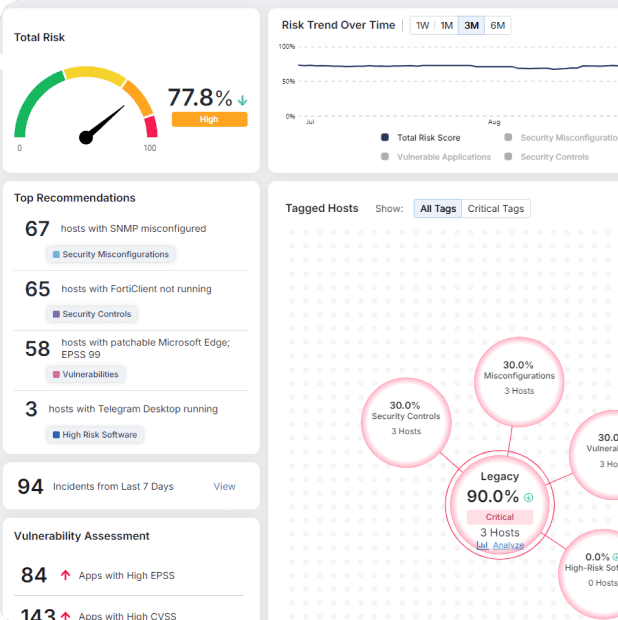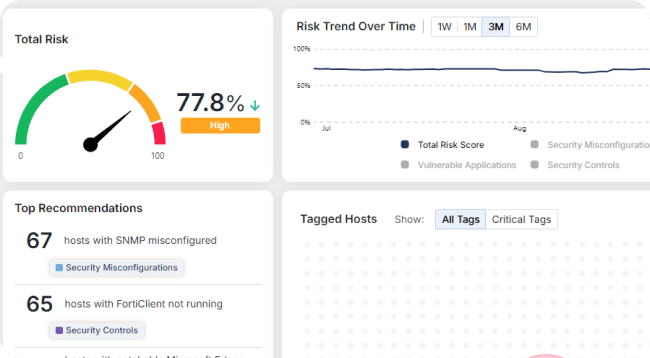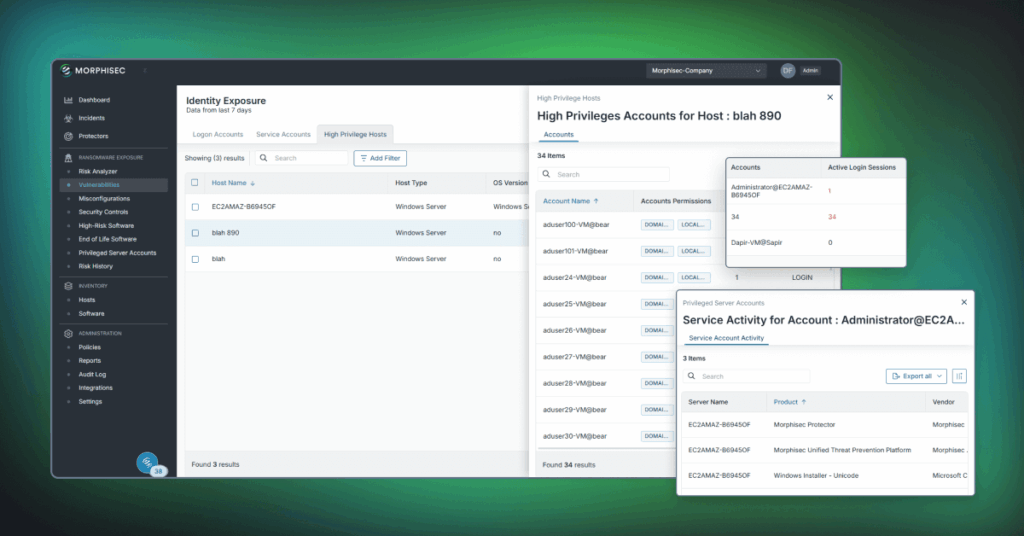Incident Management Is Broken for MSSPs — Here’s How Preemptive Defense Fixes It

Managed Security Service Providers (MSSPs) are under constant pressure.
Every client brings a new mix of tools, attack surfaces, and incident noise. Analysts work around the clock to monitor, detect and respond to alerts that often lead nowhere—while threat actors continue to find new ways to slip past even the most advanced detection stacks.
The result? A system that’s reactive by design and overloaded by complexity.
In today’s threat landscape, the time it takes to detect and respond is no longer the measure of success. The only metric that matters is preventing the attack from executing in the first place.
The Alert Avalanche: Too Much Noise, Not Enough Signal
The data says it all. According to Splunk’s 2025 State of Security Report:
- 59% of security teams say they’re overwhelmed by too many alerts,
- 55% battle excessive false positives, and
- 46% spend more time maintaining tools than defending clients.
For MSSPs managing dozens—or hundreds—of tenant environments, that problem compounds fast.
Analysts are buried under alert queues, often investigating duplicate incidents across overlapping tools. In fact, 84% of SOC analysts report investigating the same incidents unknowingly, according to Devo’s 2025 SOC Performance Study.
This endless triage cycle drains focus and morale.
The more alerts generated, the more opportunities attackers have to blend in with the noise. The irony? Every “false alarm” consumes valuable minutes that could have been spent stopping the real thing.
Reactive Response: Fighting Fires That Already Started
Despite massive investments in detection and response tools, 85% of incidents still originate from internal or endpoint alerts, not from proactive detection or threat hunting.
By the time the alert fires, the attack has already succeeded in executing malicious code, leaving MSSPs scrambling to contain lateral movement, privilege escalation, or data exfiltration in real time.
Detection-first architectures rely on signatures, heuristics, and behavioral analytics. But modern attackers are innovating faster, leveraging fileless techniques, zero-day exploits, and AI-generated code to evade those models.
When the attacker is inside before the EDR sees them, “response” becomes recovery—and often damage control.
Dwell Time: The Silent Cost of Slow Containment
The 2025 M-Trends Report shows that the average dwell time—the period between intrusion and discovery—rose to 11 days, reversing years of progress.
- When the breach is identified by a third party, dwell time jumps to 26 days.
- When attackers themselves announce their presence (for example, via ransom note), that number drops to 5 days—but by then, it’s far too late.
Extended dwell time means attackers have days or weeks to escalate privileges, disable controls, and steal or encrypt critical data. For MSSPs, those delays translate directly into breach escalation costs, client churn, and reputational damage.
IBM’s 2025 Cost of a Data Breach report reinforces this: organizations that contain a breach in under 30 days save an average of $1.5 million compared to those that don’t.
For MSSPs, helping customers shorten that window is both a performance differentiator and a financial imperative.
The Need for a Preemptive Cyber Defense Model
The numbers tell a story of reaction fatigue and operational burnout. MSSPs are stuck maintaining complex, detection-heavy stacks that alert too often and prevent too little.
To truly deliver value and scale efficiently, service providers need to shift from response to prevention—a mindset and emerging strategy known as Preemptive Cyber Defense.
Preemptive defense is a proactive strategy that neutralizes threats before they execute—reducing false positives, analyst fatigue, and the need for constant tuning.
Instead of relying on pattern recognition after the fact, preemptive defense (powered by deception-based technology like Automated Moving Target Defense, or AMTD), hardens the environment itself, dynamically concealing system targets and forcing attackers into traps they can’t anticipate or bypass.
How Morphisec Helps MSSPs Break the Incident Cycle
Morphisec was purpose-built to help MSSPs move beyond detection fatigue and deliver consistent, scalable prevention that fits seamlessly into managed environments.
At the heart of this capability is Morphisec’s MSSP Incident Management — a unified framework designed to streamline visibility, triage, and response across multiple customer environments. It provides MSSPs and their analysts with:
- Unified Incident Oversight — Morphisec provides a single pane of glass for MSSPs and large enterprises, giving administrators a unified incident command center that eliminates the need to switch between individual tenant dashboards. This consolidated view accelerates decision-making and enables teams to manage security incidents holistically, across every managed environment.
- Accelerated Triage and Response — Through the centralized console, administrators can perform key response actions—like updating incident statuses or prioritizing critical alerts—across all child tenants simultaneously. This capability dramatically reduces manual effort and Mean Time to Respond (MTTR), ensuring analysts spend less time context switching and more time mitigating real threats.
- Holistic Oversight and Risk Reduction — With aggregated visibility across customers, MSSPs gain assurance that no incident slips through the cracks due to being siloed in an individual tenant view. This elevated visibility enhances security oversight, improves risk assessment accuracy, and ensures consistent policy enforcement across every client’s environment.
Together, these features transform incident management from a reactive, fragmented process into a proactive, coordinated command center experience—one that drives operational efficiency and reduces burnout across analyst teams.
With Morphisec, you get:
- Prevention-First Protection — At the core of Morphisec’s platform is AMTD, a patented deception-based technology that proactively prevents ransomware, fileless malware, and zero-day exploits before execution.
By constantly morphing the attack surface at runtime, AMTD denies attackers a static target, stopping malicious behavior before alerts ever fire. For MSSPs, this means fewer alerts, faster containment, and dramatically reduced operational overhead. - Multi-Layered Anti-Ransomware Assurance — Morphisec’s Anti-Ransomware Assurance Suite delivers pre-, during-, and post-execution protection across all endpoints and servers:
- Pre-execution: Detects and mitigates vulnerabilities before attackers exploit them with Adaptive Exposure Management.
- During execution: Neutralizes ransomware and advanced threats in real time with Infiltration Protection and Impact Protection.
- Post-execution: Supports forensic recovery and data restoration with Adaptive Recovery.
Unlike traditional detection models, this approach provides deterministic prevention; attacks are stopped automatically, without analyst intervention or complex playbooks.
- Full Deployment = Full Confidence — Partial endpoint coverage is a critical weak point. Full deployment across all Windows endpoints and servers ensures no asset becomes the attack vector that compromises your client—or your reputation.
It also provides consistent policy enforcement, streamlined multi-tenant management, and measurable reductions in incident volume. - Business and Operational Value
- Reduce alert fatigue and false positives through deterministic prevention.
- Enhance customer satisfaction and trust by delivering quieter, more predictable protection.
- Achieve faster containment and SLA adherence with simplified management.
- Drive growth and margin with a scalable, prevention-first service model.
In short, Morphisec helps MSSPs trade constant alert fatigue for continuous protection.
From Responding to Preventing: The New MSSP Advantage
In a world where every minute of dwell time matters, reaction is no longer enough.
Preemptive defense empowers MSSPs to stop attacks before they start—eliminating noise, protecting clients more effectively, and freeing analysts to focus on strategic improvements rather than firefighting.
Prevention is the new performance metric.
And with Morphisec’s preemptive cyber defense platform, MSSPs can finally deliver incident management that’s proactive, scalable and resilient.
See how Morphisec can help your MSSP eliminate false positives, reduce alert fatigue, and stop ransomware before it starts. Download our solution brief to learn more.
Stay up-to-date
Get the latest resources, news, and threat research delivered to your inbox.



















